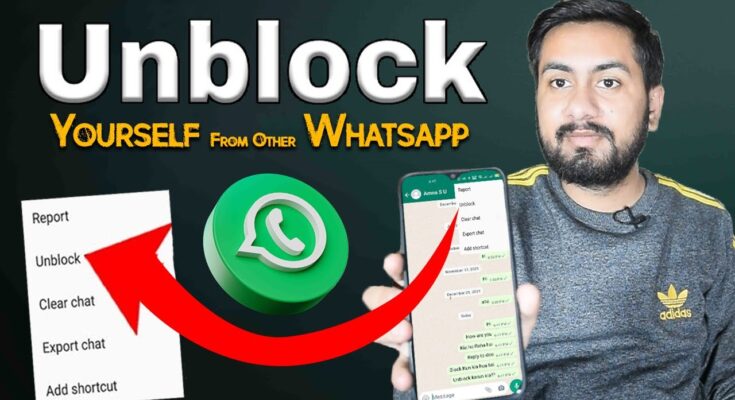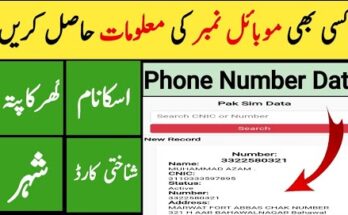Introduction to WhatsApp Blocking
WhatsApp blocking is a feature that allows users to restrict specific contacts from messaging or calling them through the platform. When a user is blocked, they are unable to send messages, place calls, or view the blocker’s profile updates, such as status, profile picture, and last seen timestamp. This functionality is designed to provide privacy and control for users, allowing them to manage their connections effectively.
The blocking mechanism operates without notifying the blocked party directly, leaving them to deduce the action based on reduced communication access. Understanding how blocking works is critical when attempting to address situations involving restricted interactions on WhatsApp.
Understanding Why You Might Be Blocked
Being blocked on WhatsApp can occur for various reasons, often tied to interpersonal communication or app limitations. Identifying potential causes is essential to resolve conflicts effectively. Blocks can happen when users violate boundaries, repeatedly send unsolicited messages, or engage in behavior perceived as disrespectful. Overwhelming someone with frequent calls or texts may lead them to restrict contact for personal space.
Technical reasons, such as account misuse or the other party suspecting spam activities, could also contribute to being blocked. Noticing signs like missing profile pictures, undelivered messages, or absence of status updates can indicate a block. Assessing actions and communication style helps clarify the situation.
Key Indicators That Confirm You’ve Been Blocked
Identifying whether someone has blocked you on WhatsApp requires careful observation of specific signs within the app. Though WhatsApp does not explicitly notify users about being blocked, certain indicators make it possible to assess.
Signs that may suggest a block:
- Absence of Profile Picture: The contact’s profile photo disappears, leaving only the default avatar visible.
- No Last Seen or Online Status: You cannot view their “Last seen” or “Online” under their name.
- Undelivered Messages: Messages sent show a single gray checkmark and remain undelivered indefinitely.
- Call Unavailability: All attempts at voice or video calls fail without connecting.
- Unable to Add to Groups: Adding the contact to a group chat results in an error message.
Respecting Privacy and Ethical Considerations
When exploring methods to regain communication with someone who has blocked you on WhatsApp, it is crucial to consider their privacy and intentions. Blocking is often a deliberate choice made to protect personal boundaries or to avoid unwanted interactions. Attempting to bypass this decision can inadvertently lead to discomfort or breaches of trust.
To approach this situation ethically, users should:
- Reflect on the reasons for being blocked and assess if reconciliation is mutually desired.
- Avoid resorting to unauthorized methods or third-party tools to bypass restrictions.
- Respect the person’s choice, ensuring actions align with both legal boundaries and moral considerations.
Clear and honest communication remains the most respectful pathway.
Examining Your Relationship with the Blocker
Understanding the reasons behind being blocked is essential before attempting to address the issue. The individual should evaluate past interactions with the blocker to identify any conflicts, misunderstandings, or behaviors that might have contributed to the action. It is helpful to reflect on recent communication patterns, tone, and frequency of messages. This process allows one to approach the situation with clarity and empathy, minimizing further disputes.
By pinpointing the root cause, individuals can decide whether reconciliation aligns with personal values. They might benefit from addressing unresolved issues directly or respecting the other party’s boundaries. A thoughtful approach enhances chances for mutual understanding over impulsive measures.
Alternative Communication Methods to Resolve Issues
When blocked on WhatsApp, exploring alternative communication methods can be a practical approach to address the situation. Using these channels may help clarify misunderstandings or convey important messages:
- Send an Email: Email allows users to directly communicate in a polite and formal manner, offering a chance to explain concerns or resolve conflicts.
- Use Other Messaging Apps: Platforms like Telegram, Signal, or iMessage might still offer access to communicate with the individual.
- Make a Phone Call: A direct phone call can be an immediate way to address issues and seek resolution.
- Leverage Mutual Connections: Mutual friends or colleagues may facilitate communication by acting as mediators between both parties.
These methods prioritize respectful and constructive dialogue.
Using a Secondary WhatsApp Account: Pros and Cons
Pros
- Bypassing Blocks: Creating a secondary WhatsApp account allows users to re-establish communication with someone who has blocked their primary account.
- Privacy Control: It offers the option to keep specific contacts or groups separate from the main account, enhancing privacy.
- Convenience for Multiple Purposes: Having a secondary account can help distinguish between personal and professional communication.
- Minimized Conflict: It ensures the original blocked account remains unaffected, mitigating potential misunderstandings.
Cons
- Account Verification: A separate phone number is necessary, which might not be readily available.
- Risk of Detection: The other person may recognize it’s a secondary account, possibly leading to further blocking or conflict.
- App Management Complexity: Managing multiple accounts may become cumbersome and require additional tools or apps.
- Terms Violation: Using dual accounts might breach WhatsApp’s policies, risking account suspension.
Deleting and Reinstalling WhatsApp: Does It Work?
Some users believe deleting and reinstalling WhatsApp might help bypass a block. However, this method fundamentally does not work as blocking operates server-side. Deleting the app or logging out does not reset the block, as the blocked status is tied to the user’s phone number on WhatsApp’s servers.
Here’s why it fails:
- Block Data Stored on Servers: WhatsApp retains blocking preferences even after app reinstallation.
- Account Authentication: Upon reinstallation, users must verify their phone number, restoring all server-linked account data, including the block.
This approach only refreshes app settings and temporarily clears local media or chat cache.
Requesting the Blocker’s Contact Through Mutual Connections
When facing a WhatsApp block, leveraging mutual connections provides an alternative to initiate communication indirectly. One way is to politely request a mutual friend or acquaintance to act as a mediator. This individual can facilitate a conversation by reaching out on the user’s behalf and relaying their message.
Steps to Follow:
- Identify Trusted Mutual Contacts: Choose someone who is known to both parties and willing to assist.
- Explain the Situation Respectfully: Provide context to the mutual contact while maintaining professionalism and discretion.
- Request Their Assistance: Politely ask if they could convey your message or ask the blocker for permission to share their reasoning.
It’s important to respect boundaries during this process to avoid escalating tensions.
How Group Conversations Can Help Establish Dialogue
Group chats provide an alternative avenue for communication when direct contact has been restricted. If an individual is blocked on WhatsApp, joining a shared group chat can facilitate indirect interaction. Through this setting, blocked users can contribute to discussions, share updates, or address unresolved tensions within a mutual space.
Admins in group conversations hold control over adding participants, which may include both the blocker and the blocked party. This dynamic can create opportunities for reintroducing dialogue through neutral topics. However, it is critical to approach group interactions with courtesy and respect, ensuring the conversation remains constructive and avoids conflict escalation.
What to Do When All Options Have Been Exhausted
When all avenues to be unblocked on WhatsApp have been tried unsuccessfully, other potential steps may be considered. Persistence and creativity can sometimes result in breakthroughs, but it’s important to respect boundaries.
- Reach Out Using Alternative Platforms: Communicate via email, SMS, or social media platforms to explain your intent and seek resolution.
- Mutual Connections: Explore whether mutual friends or trusted intermediaries could facilitate the discussion.
- Self-Reflection: Consider whether reconciliation requires addressing underlying issues that led to the block.
- Observe Legal Boundaries: Ensure actions comply with platform rules and local regulations to avoid harassment or escalation.
Each approach should be applied thoughtfully, aiming for communication while respecting personal space.
Preventing Future Blocks: Tips for Healthy Communication
Maintaining a positive online interaction is essential for avoiding future conflicts or communication breakdowns. Consider these practical strategies to develop healthier communication practices:
- Respect Boundaries: Understand and respect the other person’s preferences for digital communication frequency or timing. Over-texting or ignoring boundaries can cause friction.
- Be Clear and Honest: Express thoughts and feelings directly in appropriate language. Misunderstandings often arise from vague messages or dishonesty.
- Resolve Conflicts Respectfully: Address disagreements calmly, without resorting to personal attacks or aggressive language. Respect fosters trust.
- Avoid Spamming Behavior: Sending excessive messages or irrelevant content may appear intrusive or annoying.
Investing time in open, considerate dialogue nurtures lasting and productive relationships, reducing the likelihood of getting blocked.
Conclusion: Moving Forward Positively
Breaking communication barriers and ensuring seamless conversations are key to fostering healthy connections. If a WhatsApp block occurs, individuals should focus on reflecting on the reasons behind the situation and addressing them constructively. Open and respectful dialogue outside the app can pave the way for reconciliation and mutual understanding. It is also essential to respect the other person’s boundaries and decisions. Viewing the situation as an opportunity to grow personally and resolve conflicts affirms a mature approach. By prioritizing respect and empathy, one can move forward positively, fostering better communication dynamics in the future.



